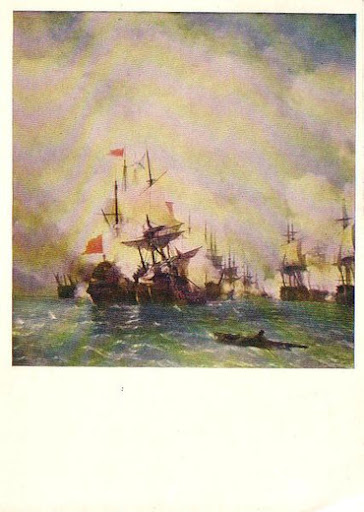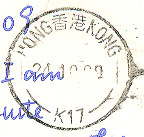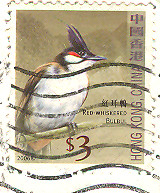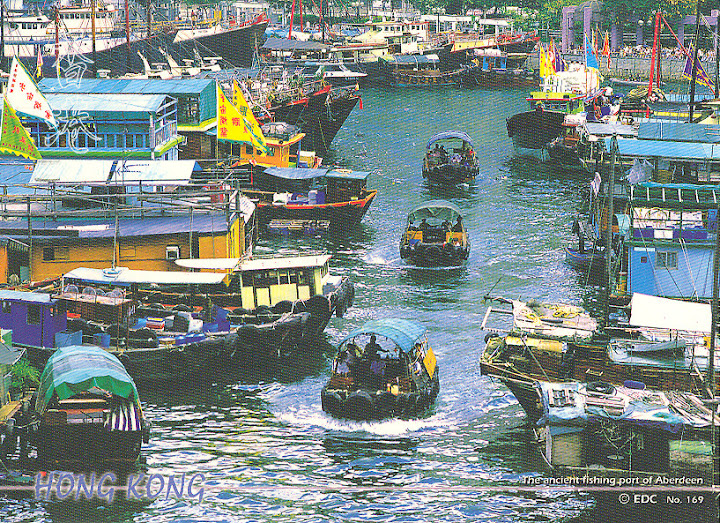New stamp “200th anniversary of birth of V. I. Istomin, the hero of Sevastopol defense 1854—1855” issused in Russia at October, 14th 2009.


Here is the text was written specially for this event by my friend and collector Dmitriy Maleev from Angarsk (Irkutskaya oblast).
Dmitriy and me will be very glad if you’ll comment this post and will also answer the question: are texts like this interesting for you?
First defense of Sevastopol
It will be the story about fellow-soldiers, Russian naval commanders, heroes of Navarin, Sinop and Sevastopol defense, whose friendship started in Kronshtadt and followed for life.

Nakhimov Pavel Stepanovich was born at June, 23rd (July, 5th by Gregorian calendar) 1802 in Gorodok village of Smolensk region of Russia.
Kornilov Vladimir Alekseevich was born at February, 1st (13th by Gregorian calendar) 1806 in Irkutsk.
Istomin Vladimir Ivanovich was born in 1809 in Lomovka village of Penza region of Russia.
At different years they all studied in Naval military school of Peterburg. They had got baptism of fire In Narva battle fighting abroad the “Azov” battleship at October 8th (20th) 1827. United squadron of Russian, Britain and French ships won this battle against Turkish-Egyptian fleet. ”Azov” had fired 5 ships and became the first Ship of Guard at Russian fleet.

I. K. Ayvazovskiy. “Navarin battle”
Nakhimov even before Navarin completed his round-the-world voyage on “Kreiser” frigate at 1822—1825. In 1832 he became a master of “Pallada” ship (let’s think of Goncharov’s novell). In 1836 he was a master of “Silietria” battleship on Black Sea fleet. In 1852 he became a vice-admiral. His ship was the 120th-cannon battleship “Maria Empress”.

Nakhimov Pavel Stepanovich
In 1838 Kornilov became a hief of staff of Black Sea squadron and a first master of 120th-cannon battleship “Twelve apostles” (this ship was painted by Ayvazovskiy: In 1846 he was assigned to Britain for controlling of steambots building ordered there. In 1852 he became a vice-admiral b in fact was commander of Black Sea fleet. He tried to change sailboats to steambots and rearm the ships. In 1853 he took part in thirst steamboats fighting. He mastered 10th-cannon steamboat “Vladimir” joined battle with 10th-cannon Turkish-Egyptian steamboat “Pervaz-Bakhri”. After three hours of fighting “Pervaz-Bakhri” had gave up.

Kornilov Vladimir Alekseevich
Istomin mastered several ships on Chyornoe (Black) sea. Participated in Caucasian war in 1847. In 1850 then he was in a rank of captain a mission of heading of newest 120th-cannon battleship “Paris” was assigned to him.

Istomin Vladimir Ivanovich
This ship represented on Victoria’s envelope and it was 3rd ship named identical. The 1st ship built in 1814 was named in honor of capture of Paris by Russian army. Prow of that ship’s ram was enriched by the figure of two-headed eagle with emblem of Paris in claws.
The last “Paris” was 4,790-ton ship. It was 64.6 meters overall length, 18.1 meters overall width and carried 1000 team members. The last “Paris” was armed impressively: 28 of 68-lb bombing cannons, 38 of 36-lb cannons, 24 of 24-lb cannons and 34 of 36-lb carronades.

The 150th anniversary of the Battle of Sinop
In 1853 Crimean (or Eastern, as it named in other countries) war had began.
At November, 18th (30th) 1853, at the beginning of the war, Russian squadron commanded by vice-admiral Nakhimov disclosed and destroyed Turkish fleet in Sinop bay. Turkish lost 7 frigates, 3 corvettes, 1 steamboat, 4 cargo ships and 5 maritime batteries. 3000 Turkish team members of 4500 overall was killed. Many of Turkeys was captured including Osman-pasha admiral, the commander of Turkish squadron. None of Nakhimov’s squadron ships was lost, 37 team members was killed and 299 injured. Only ship was not destroyed in that battle was “Taif”. The chief adviser of Osman-pasha Adolph Slade was abroad on that ship. Using better velocity properties “Taif” was able to run away from Russian ships and to brought a message about full extermination of Turkish squadron to Istanbul.

I. K. Ayvazovskiy. “Sinop. Night after the battle November 18th 1853”
“Paris” ship mastered by Nakhimov leaded the second column of Russian ships. This ship came in the road and destroyed 5th maritime battery, “Ghuly-Sephid” corvette, fired “Damiad” and “Nizamie” frigates causing this ships cast ashore. As Nakhimove wrote in his report, Istomin “showed exemplary fearlessness and presence of mind, wisdom, clever and fast orders during the battle”. After this battle Istomin was promoted to the rank of rear admiral.
During shots to the maritime batteries bombs from Russian ships caused fires in town. After destroying of Turkish squadron Russian sailors landed and began firefighting and saving of citizens.
Sinop battle was the last battle of sail fleets. This battle and deaths of citizens as well was the one of the reasons of Britain and France joined to the war at the side of Turkey. In June—July 1854 outnumbered British-French-Turkey fleet (34 battleships and 55 frigates, mostly steam-driven) blocked Russian fleet in Sevastopol. Landing of united forces and followed 349-days heroic defense of Sevastopol came went to history of Russian fleet as especially bright both heroic and tragic events.
All the Black Sea fleet went down to the seabed of Sevastopol bay. Thereby the way to town was barricaded for enemy ships. Teams landed and fortified cost line by the cannons of ships sent to seabed. One of the batteries was named “Parizhskaya” (“Parisian”) and the ship “Paris” stayed in the road with 214 gunners.
Kornilov was one of coordinators of Sevastopol defense; his war commander talent was shown especially bright during this defense. He gave the lead of smart arrangement of active defense. He died like a hero on Malakhov barrow at October 5th (17th) 1854.
Istomin was assigned to command of Northern fortification and later then this position was held by Kornilov stayed there as chief of staff. After Kornilov’s death he never leaves the position and was killed by direct shot of cannonball to the head at the Mach 7th (19th) 1855.
Since February 1855 Nakhimov was the commander of Sevastopol seaport and military governor of town. At March he was promoted to admiral. At June 28th (July 10th) 1855 during going around the front line fortifications at the Kornilov’s bastion of Malakhov barrow he was fatally injured in the head by the bullet. He died at June 30th 1855.

Kornilov and Nakhimov monuments in Sevastopol
At August 28th (September 9th) garrison left the town preliminary blew up all the batteries and storages. “Paris” battleship was sank and took his place near other ships went down before. Now a monument devoted to sank ships can be found there.

Monument devoted to sank ships in Sevastopol
Long times after that war as stated in peace treaty Russia has no warships on Black Sea. Only at the beginning of XIX century revival of fleet begun.




















